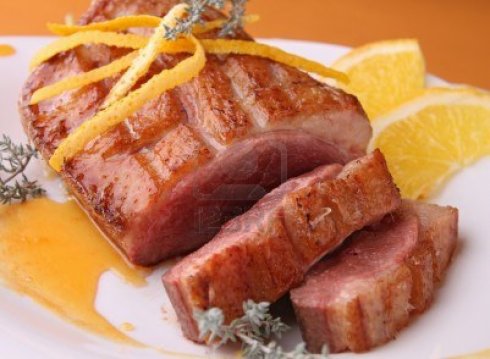Asian desserts in general have limited appeal to Westeners. Shaved ice with something resembling scarlet red Cool Aid, drizzled over it, is not particularly inspiring or satisfying. Bright flourescent coloured slithers of wormy noodles swimming in syrup, look vile and unappetizing. Then there are some odd ingredients thought of as belonging to the category of desserts. For example corn. To Westerners corn firmly belongs to a main course. To foodies and chefs, as a third rate side dish to someone’s attempt at cooking a main course. We would not (and really should not) dream of it as dessert. Corn flavored ice cream? Urgh, it is absolutely as disgusting as it sounds.
However, there is a jewel in the abysmal combinations which makes up Thai desserts. In fact, not only is it the best Thai dessert, it is possibly the best dessert ever, elaborate Western ones included. Why Thais bothered coming up with any further, rather paltry dessert offerings, is a bit of a mystery. The unlikely combination of the sweet Mango and sticky rice makes for an superb pairing that is sublime. Once you have had it, you will instantly declare it as one of the best desserts you’ve ever had. Honestly, its so good, it makes the existence of any other dessert redundant .
I yet have to meet someone who has not wanted to break out in Handel’s Hallelujah after the first bite. Try it if you never have, and prove me and millions belonging to the Mango and Sticky Rice fanclub wrong.
Enough selling….
Here is a video that someone made of how an authentic mango and sticky rice is served in Bangkok. This stall is literally up the road from where I live. But the video and the presenter is not me. Notice his reaction at 2:00 when he has the first bite. Its a typical reaction, no matter how many times you have had this dessert !
The only word of caution is that I would not serve it after a heavy main course. The rice is quite filling. Mango and Sticky rice would be the perfect accompaniment to an light Asian main, like a noodle dish or stir-fry. It is not something I would serve as a desert after a 2 course meal, and if I did, I would limit the portions substantially.
Making it is far easier than most think. In fact soaking excluded, it can be ready in 30 minutes. If mangoes are not in season, or hard to obtain, use peaches, fresh or tinned, syrup excluded.
____________________________________________________________
Recipe: Mango with Thai Sticky rice, ข้าวเหนียวมะม่วง pronounced Khȃo Nǐaw Má-mûang
- 1 cup coconut milk
- 2 pinches salt
- 1 cup Sticky Rice ()
- 2 tablespoons sugar
- Optional : A few tablespoons of yellow mung beans
The Traditional Method Using a Steamer: Soak the sticky rice in enough water to cover the rice for at least an hour and even overnight. Take your steamer, put water in the bottom and cover the steam section with cheese cloth or muslin cloth. Pour the sticky rice on the cheesecloth, cover with the lid and put it on the stove on medium to high heat. The sticky rice should take about a 20 minutes of steaming to cook and will become translucent when done.
The Microwave Method: Instead of steaming it in the traditional way, you may well want to opt for the microwave method. I have not tried it myself, so further comments or suggestions on this method would be appreciated.
Assembling: Heat the coconut milk in a pot over medium heat. Stir constantly and let thecoconut milk simmer for a minute. Hard boiled coconut milk will curdle. Add sugar and salt. Remove from heat. Pour 3/4 of the hot coconut milk over the hot sticky rice. Let it sit for 5 minutes for the coconut milk to be absorbed by the rice. The rice should be a little mushy. Spoon the rest of the coconut milk on top of the rice when the desert has been plated.
Garnish with crunchy fried yellow mung beans (recipe below) or toasted sesame seeds.
_________________________________________
Recipe : Mung Crunch : Fried (yellow) Mung beans
1/3 of a cup of mung beans
2 teaspoons vegetable oil
Salt to taste
1. Just soak the mung beans overnight. Drain them and dry thoroughly.
2. Fry in vegetable oil over a moderate heat, turning frequently, until they are browned and crisp – between 5 and 10 minutes. BEWARE : it smells like death !
3. Drain on some paper towels, sprinkle with salt, and cool. They store successfully in airtight jars.
Last word : Leftover sweet sticky rice can be put into the fridge, but needs to be warmed a little in the Microwave before serving. Cold sticky rice is simply inedible. I have heard that one could use Thai Jasmine Rice as a substitute for glutenous rice, the texture however will be very different to the sticky rice. If you have no mangoes, try peaches, fresh or even tinned.




 The modern version, a little like an edible
The modern version, a little like an edible 








